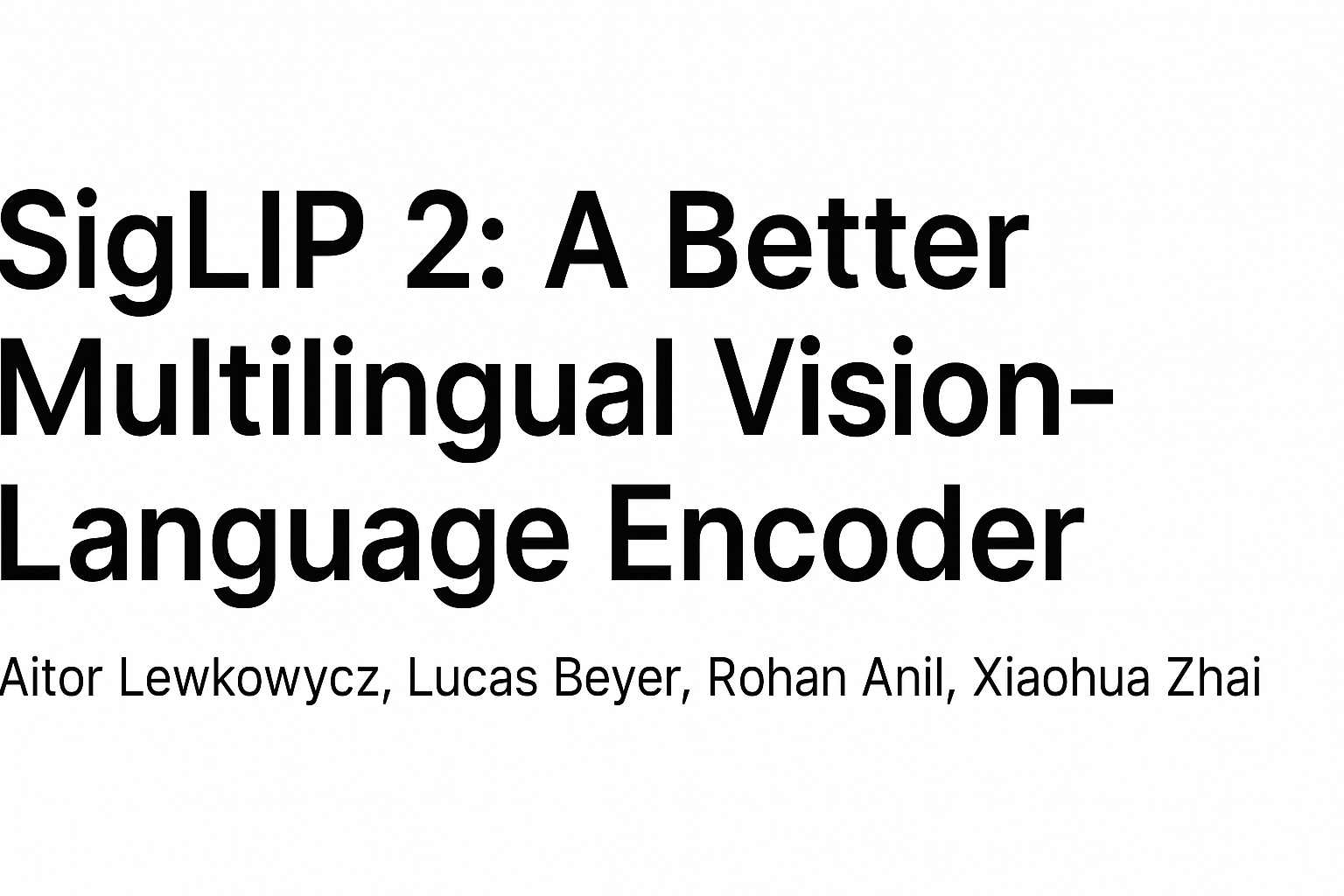
June 04, 2025
SigLIP 2: A Better Multilingual Vision-Language Encoder
SigLIP 2: A Better Multilingual Vision-Language Encoder
Did you ever give it a shot that how AI interprets images and text? How does it distinguish things within images and understand multilingual text captions? Vision-language model enthusiasts recognize CLIP and SigLIP. What if I told you that Google recently improved SigLIP 2; a model that is smarter, more precise, and better at recognizing pictures in many languages?
SigLIP 2 is not just an enhancement, rather it changes the game. It enhances vision-language interaction over SigLIP. Imagine giving AI superior eyes and a sharper brain to understand text and images more naturally and human-like. What strengthens it? How can you improve your AI apps using it? Let's discuss in next sections.
Understanding Vision-Language Models
Let's step back before discussing SigLIP 2's benefits. Vision-language models (VLMs) help AI interpret text and images; they help in encoding an image into relevant features and connect it with text-based descriptions.
AI models like CLIP and ALIGN trained to match photos with text descriptions made early advances in this field. However, these models lack some fine-grained features, so they become less popular when dealing with similar objects appeared in various settings.
SigLIP improves image-text matching with sigmoid loss. With SigLIP 2, Google has added additional training goals to improve object detection, context understanding, and picture resolution adaptation.
Why SigLIP 2 Is a Big Deal
Smart advancements set SigLIP 2 apart from its predecessors. It can now predict image captions, object positions, and fine-grained region-specific data using a decoder instead of image-text pairings.
The true magic comes with self-distillation, when the model educates itself by comparing image perspectives. Zero-shot classification, image retrieval, and vision-language comprehension optimize as it detects minor details more efficiently.
What's the coolest thing here? NaFlex, which is a dynamic resolution adaptation. This lets SigLIP 2 deal with images of different aspect ratios without affecting their structure. This makes it perfect for OCR and document processing.
Setting Up SigLIP 2 for Inference
Alright, enough theory. Let's explore how SigLIP 2 works in practice. The Hugging Face transformers library is the simplest starting point.
First, you'll need to install it:
pip install git+https://github.com/huggingface/transformers@v4.49.0-SigLIP-2
A few lines of code load a SigLIP 2 model after installation:
from transformers import pipeline
# Load a pretrained SigLIP 2 model
model_checkpoint = "google/siglip2-so400m-patch14-384"
pipe = pipeline(model=model_checkpoint, task="zero-shot-image-classification")This makes image classification using SigLIP 2 quite simple.
Running Zero-Shot Classification
Zero-shot classification is SigLIP 2's forte. Imagine you want AI to tell you what an image includes without training it on those categories.
Here's how we can do that in Python:
# Image classification example
inputs = {
"images": ["https://huggingface.co/datasets/sample_image.jpg"],
"texts": ["A cat sitting on a sofa", "A dog playing outside"]
}
outputs = pipe(inputs["images"], candidate_labels=inputs["texts"])
print(outputs)Even if the model has never seen that category, the output will show which label best describes the picture. Pretty incredible huh?
Encoding Images for Downstream Tasks
SigLIP 2 encodes pictures into embeddings for retrieval, similarity searches, and multimodal learning in addition to classification.
Let's extract image embeddings:
import torch
from transformers import AutoModel, AutoProcessor
from transformers.image_utils import load_image
# Load model and processor
model = AutoModel.from_pretrained(model_checkpoint).eval()
processor = AutoProcessor.from_pretrained(model_checkpoint)
# Process image
image = load_image("https://huggingface.co/datasets/sample_image.jpg")
inputs = processor(images=[image], return_tensors="pt")
with torch.no_grad():
embeddings = model.get_image_features(**inputs)
print(embeddings.shape) # Outputs embedding sizeFor grouping similar photos, identifying relevant captions, or training multimodal AI models, this provides a high-dimensional vector representation of the image.
Comparing SigLIP 1 and SigLIP 2
How much does SigLIP 2 improve on its predecessor? Numbers say for themselves:
- New decoder architecture enhances image detailing.
- NaFlex models adapt to various picture sizes without compromising accuracy.
- Self-distillation learning improves object detection and semantics.
- The Giant (1B) variation excels in vision-language activities.
Improved zero-shot learning, visual embeddings, and multilingual support make SigLIP 2 significant for vision-language AI applications.
Conclusion
Here comes the ending of our post. SigLIP 2 advances AI's ability to perceive, analyze, and describe pictures like humans. This model is useful for computer vision, image search engines, and multimodal AI assistants.
The best part? You are free to play with it now since it is open-source.
Waiting for what? Try SigLIP 2 and let us test AI's limits!
594 views
